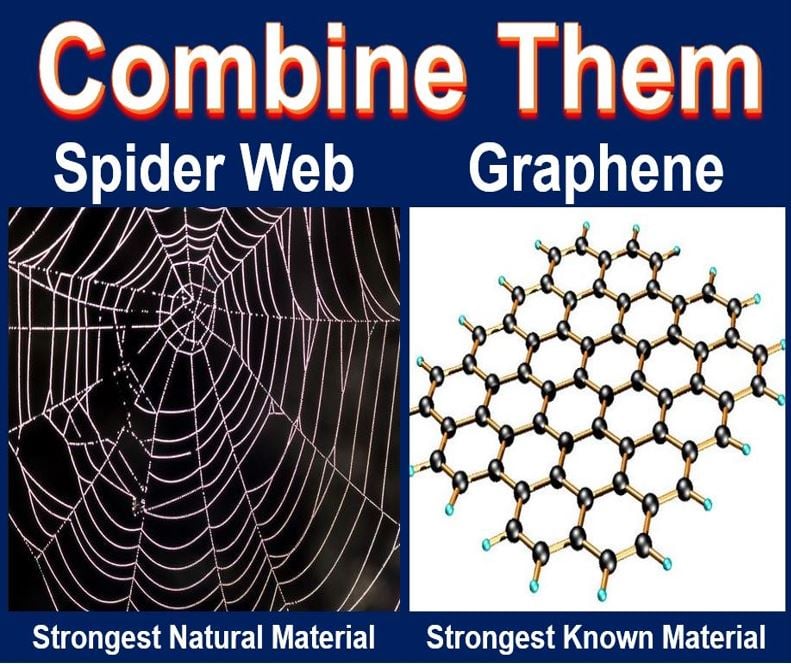If you spray a spider with graphene, the strongest material known to science, its web would be strong enough to catch a falling airplane, say scientists from the University of Trento in Italy.
Graphene, which is two-hundred times stronger than steel, is the thinnest, lightest and strongest material in the world. It consists of a single layer of pure carbons arranged in a hexagonal lattice pattern. It is so thin scientists say it is a 2-dimensional object.
Spider silk is the strongest natural material.
Nicola Pugno, Professor of Solid and Structural Mechanics at the University of Trento, wondered what might happen if you combined spider silk with graphene.

A spider web with graphene added would make an incredibly strong net.
Professor Pugno and colleagues sprayed five spiders from the Pholcidae family with a mixture of graphene particles and water. To compare the effects of the two materials, they also sprayed ten other spiders with water mixed with carbon nanotubes.
While some spiders produced poor-quality silk, for others the addition graphene mix had the opposite effect. One of the webs was 3.5 times as strong and tough as a normal spider web.
The scientists cannot explain how the carbon nanotubes and graphene ended up in the spider silk. Perhaps the carbon coats the outside of the strands, but that would not explain the increased strength, Prof. Pugno pointed out.
Prof. Pugno and colleagues think that spiders mop up materials around them and incorporate them into the silk they produce.
Four of the spiders died not long after being sprayed with the mixture.
It is too early, the researchers say, to determine how this new type of silk could be used. Perhaps a giant net could be made to catch falling aircraft, they suggested. So, one day in the future will every airport have a colony of special spiders on standby?
The researchers say they plan to investigate how else they could produce tough material using graphene, such as spraying silkworms.
In an interview with the New Scientist, Prof. Pugno said:
“This concept could become a way to obtain materials with superior characteristics.”
An international team of scientists reported in April that graphene can convert light to electricity at incredible speeds. They say their discovery could have a major impact on several technologies, including solar cells, cameras and data communications applications.
